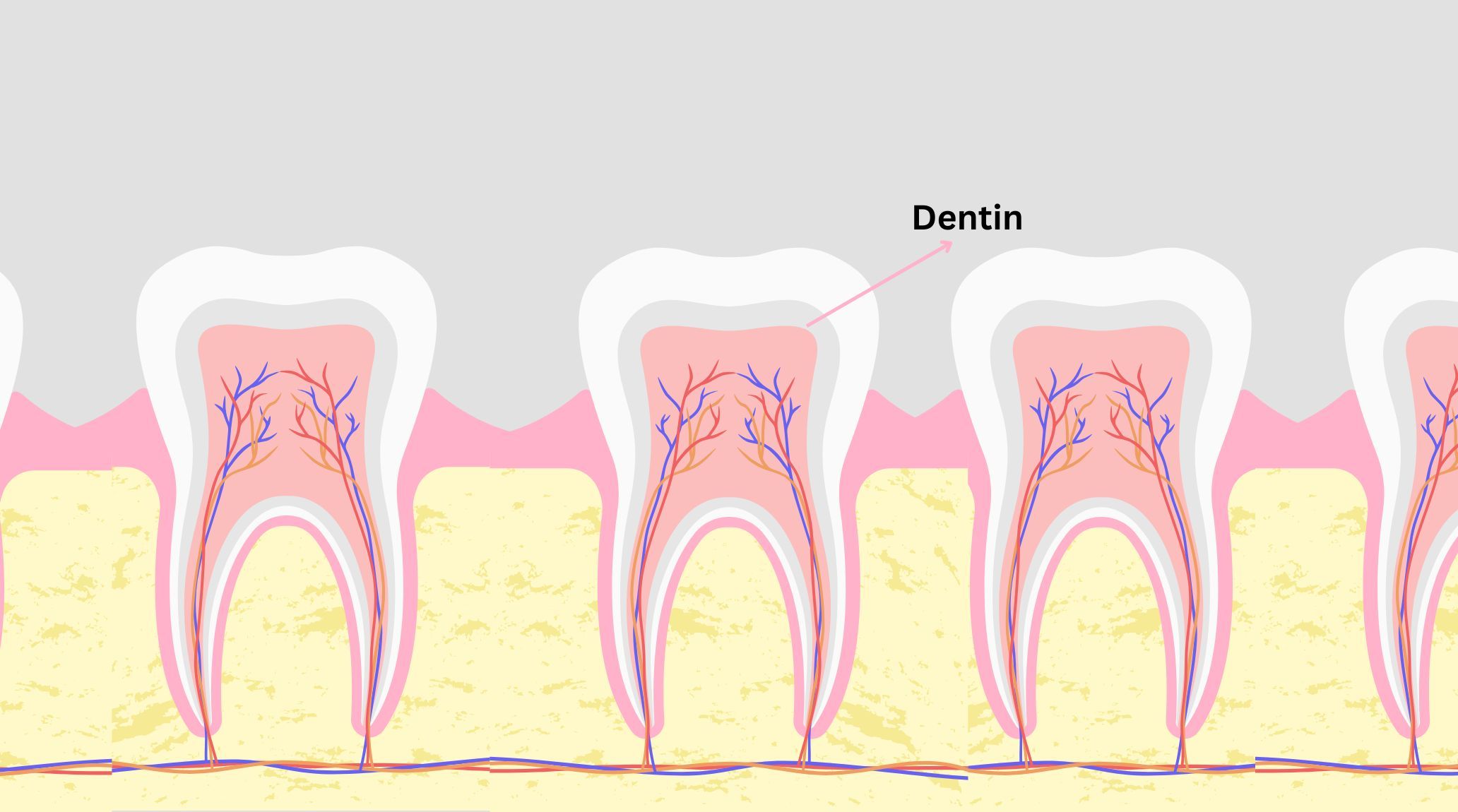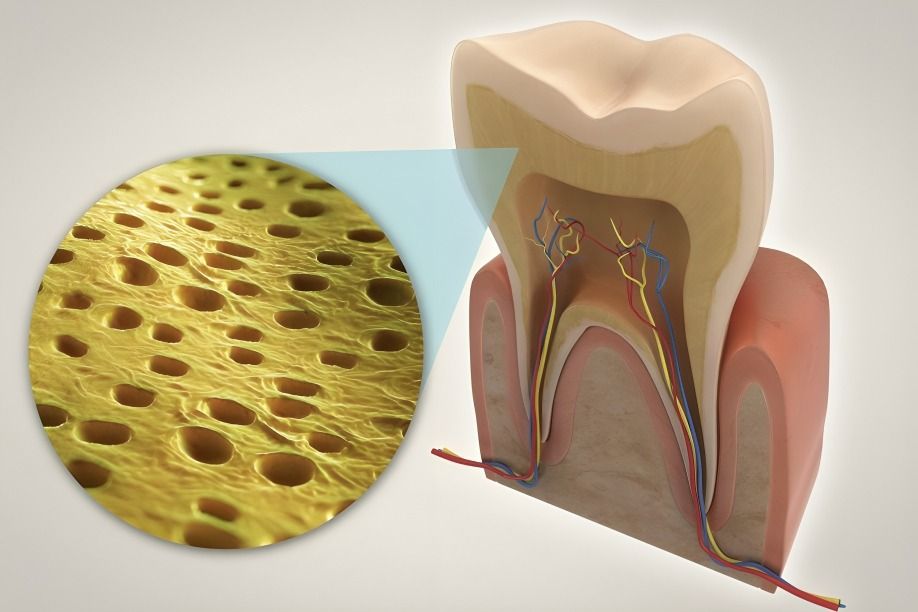
“
Tooth dentin is a fundamental part of tooth anatomy, lying just beneath the enamel and surrounding the tooth’s pulp. This dense, mineral-rich tissue makes up the bulk of the tooth and plays a crucial role in providing structural support and protection. These 20 facts delve into the essential Facts About Tooth Dentin, its functions and characteristics, exploring how it contributes to overall tooth health and resilience.1
1
”

Dentin is the hard tissue forming the main structure of teeth, found beneath the enamel and cementum, and extending into the pulp cavity and root canal. Its primary function is to protect the pulp and support the enamel.
Dentin can repair itself to some extent due to the activity of odontoblasts, which remain functional after tooth eruption. When dentin is damaged by wear, cavities, or irritants, secondary dentin is produced. This reparative dentin helps protect the tooth. 1
Dental cavities typically form in the dentin, while infections usually affect the tooth's pulp. Enamel can wear away from chewing ice or other irritants, which increases the risk of cavities and tooth loss by exposing the dentin. 2
To protect dentin, brush teeth twice daily and floss every night, not just occasionally. Regular dental visits at least twice a year are also crucial. Keeping up with these practices helps maintain dentin in optimal condition. 3
Dentin has a yellowish hue, with about 30% organic matter and water, and 70% inorganic matter. It is less hard than enamel, with its organic components including non-collagen proteins and type I collagen. 4
When dentin is exposed, it can transmit sensations like cold, hot, sour, and sweet to the pulp nerves, causing pain. Dentin formation is driven by dentin cells, with growth factors and signaling molecules from epithelial cells. 5
Odontoblasts are specialized cells located at the outer edges of the dental pulp. They are responsible for forming the dentin matrix and its mineralization. These cells remain active throughout life, continually producing dentin and supporting tooth health.6
Dentin is less rigid and more flexible than enamel, which helps absorb the forces from chewing. This flexibility reduces the risk of enamel cracking under pressure. The elasticity of dentin plays a key role in maintaining overall tooth durability. 7
Dentin is directly connected to the pulp chamber, which houses nerves and blood vessels. This connection allows dentin to relay sensations to the pulp and receive nutrients. The interaction between dentin and the pulp is crucial for tooth vitality. 8
The dentin is composed of numerous tiny tubules that run from the enamel surface to the pulp. These tubules are involved in sensation and nutrient transport. Their structure plays a significant role in how dentin responds to external stimuli. 9

In animals like sharks and rodents, dentin is continuously produced throughout their lives. This ongoing production helps them maintain functional teeth despite regular wear and tear. The adaptability of dentin in these animals is essential for their survival.
Elephants have large molars with dentin that forms in layers. As they age, their teeth undergo significant wear, which makes the dentin more prominent. This layering helps compensate for the loss of enamel and maintains tooth function. 10
Giraffes have long teeth adapted to their fibrous diet. Their dentin is specially structured to withstand the abrasive effects of eating tough vegetation. This adaptation helps ensure that their teeth remain functional over their lifetime. 11
Children's primary (baby) teeth have dentin that is less mineralized compared to adult teeth. This makes them more vulnerable to cavities and damage. The softer dentin in these teeth requires careful dental care to prevent decay. 12
In young animals and children, the pulp chamber is relatively larger than in adults. This larger pulp chamber allows for more dentin formation as the tooth grows. It also plays a role in the tooth's ability to adapt and respond to damage. 13
Sensitivity in dentin can be managed with specialized toothpastes that contain compounds to block the tubules. Fluoride treatments can also help strengthen the dentin and reduce sensitivity. Effective management is crucial for maintaining comfort.14
When a tooth is damaged, dentin can form a protective layer known as tertiary dentin. This layer helps shield the pulp from further damage and infection. The repair process is vital for maintaining the tooth’s health and function. 15
Dentin density can vary among different species, with some having denser dentin to support their specific needs. For example, animals with high-wear diets often have denser dentin. This variation helps each species adapt to its environment and lifestyle.16
Dentin can form secondary or tertiary dentin in response to bacterial invasion, helping to protect the pulp. This defensive mechanism is crucial for preventing infections from reaching the nerve-rich pulp chamber. 17
Advances in dental research are exploring ways to enhance dentin regeneration and repair. Techniques are being developed to improve treatments for tooth damage and decay. 18


